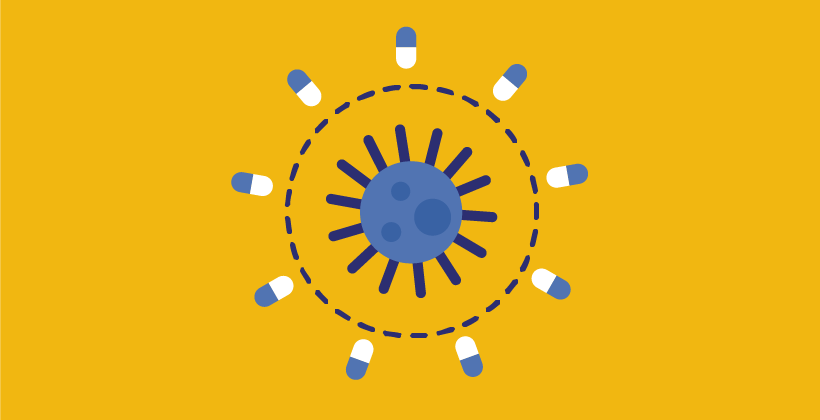High and Low Biological Value Protein Foods
Last Updated : 07 July 2008The word protein comes from the Greek word “protos”, meaning first element. Proteins are essential elements for growth and repair, good functioning and structure of all living cells. Hormones, such as insulin, control blood sugar levels; enzymes, such as amylases, lipases, proteases are crucial for digestion of foods; antibodies help us fight infections; muscle proteins allow contraction, etc. So, indeed proteins are essential to life.
Structure
Proteins are made up of amino acids, the building blocks, linked together. There are about twenty different amino acids commonly found in plants and animals. A typical protein may contain 300 or more amino acids. Each protein has its own specific number and sequence of amino acids. Rather like the alphabet, the amino acid 'letters' can be arranged in millions of different ways to create 'words' and an entire protein 'language'. Depending on the sequence in which they are combined, the resulting protein carries out specific functions in the body. The shape of the molecule is important as it often determines the function of the protein. Each species, including humans, has its own characteristic proteins – the proteins of human muscle, for instance, are different from those of beef muscle.
Amino acids can be classified as either essential (indispensable amino acids that cannot be produced during metabolism by the body and therefore must be provided by our diet) or non-essential (dispensable amino acids that can be produced endogenously in the body from other proteins). Eight amino acids (Leucine, Isoleucine, Valine, Threonine, Methionine, Phenylalanine, Tryptophan and Lysine) are considered essential for adults and nine (those mentioned above plus Histidine) for children.
When a protein contains the essential amino acids in the right proportion required by humans, we say that it has high biological value. When the presence of one essential amino acid is insufficient, the protein is said to have low biological value. The amino acid that is in shortest supply in relation to need is termed the limiting amino acid.
The protein cycle
Proteins in our body are constantly being built and disposed of. After we eat, proteins are broken down by digestion into amino acids. Amino acids are then absorbed and used to make other proteins in the body. Adequate protein and energy intake, on a daily basis, ensures the cycle continues.
Dietary sources
Proteins are found in different foods. All animal and plant cells contain some protein but the amount of protein present in food varies widely. It is not just the amount of protein that needs to be considered – the quality of the protein is also important and that depends on the amino acids that are present. In general, proteins from animal sources have a higher biological value than proteins from plant sources. Animal sources of protein are meat, poultry, fish, eggs, milk, cheese and yogurt, and they provide high biological value proteins. Plants, legumes, grains, nuts, seeds and vegetables provide low biological value proteins.
However, as the limiting amino acid tends to be different in different vegetable proteins, combination of vegetable sources of proteins in the same meal (e.g. legumes or pulses with cereals), can result in a mix of higher biological value. These combinations are generally found in traditional culinary recipes from the different continents (e.g. beans with rice/pasta/manioc, chick-peas with bread, lentils with potatoes, etc).
Omnivorous diets (containing foods derived from animals and plants) in the developed world provide adequate amounts of protein. However, subgroups of the population who avoid all foods of animal origin may have difficulties in meeting their protein requirements.
Protein content of a selected number of foods (g/100 g food)
Food | Amount of protein (g per 100 g of food) |
|---|---|
White rice, cooked | 2.6 |
Pasta, cooked | 7.7 |
White bread | 7.9 |
Semi-skimmed milk | 3.4 |
Cheddar cheese | 25.4 |
Poached egg | 12.5 |
Rump steak, grilled | 31.0 |
Peanuts | 25.6 |
Vegetarian diets and dietary protein supply
Vegetarian diets are based on grains, vegetables, fruits, legumes, seeds and nuts, with the elimination of meat, fish or poultry from the diet. Variations exist within vegetarian diets, where some include dairy products and eggs (e.g. lacto- ovo vegetarian diets), others include only dairy products but not eggs (e.g. lacto-vegetarian diets), while the strictest vegetarian diets include no products produced by animals (e.g. vegan diets). Vegan diets in particular, may lack the main sources of high biological value proteins and people following these diets may have difficulty meeting their protein requirements especially to support extra needs due to growth (e.g. children and pregnant women). Therefore in the case of vegetarians, vegans in particular, the combination of proteins from different vegetable sources and a balanced food choice are very important to ensure that required levels of essential amino acids are attained.
Protein energy malnutrition
Protein energy malnutrition (PEM) describes a range of disorders occurring mainly in developing countries. It mainly affects young children and is the result of both too little energy and too little protein in the diet. The two most common forms of PEM are Marasmus and Kwashiorkor.
Marasmus is a chronic condition that occurs in young children who have been weaned off breast milk on to a diet containing too little energy and protein and is characterised by muscle wasting and an absence of subcutaneous fat. Inadequate hygiene often leads to contamination of foods which causes infections, particularly gastro-intestinal infections, and a further increase in energy requirements. The parent may treat the infection by fasting the child, giving only water or other fluids of little nutritional value. As a result, the child becomes severely underweight and very weak and lethargic.
Kwashiorkor tends to occur in slightly older children who, after an extended period of breast feeding, have been weaned onto a diet mainly comprising starchy foods, which is low in energy and protein. Kwashiorkor often follows an acute infection. A child with kwashiorkor is severely underweight but this is often masked by oedema (water retention) which makes the face moon-shaped, and the arms and legs look plump. The hair is thin and discoloured, and the skin may show patches of scaliness and variable pigmentation. Medical treatment and an adequate diet, combined with good hygiene practices, are vital if children with PEM are to recover and grow properly.
Protein and chronic diseases
Scientific studies have suggested that mortality rates from cancer and cardiovascular disease (CVD) are lower in those who avoid eating meat. Results from these studies are often confounded, however, by factors such as smoking, social class and body mass index (BMI). Although a vegetarian (and in particular a vegan) diet may be higher in fibre, fruit and vegetables than an omnivorous diet, at present there is no scientific justification for eliminating lean meat from the diet. It would, however, be prudent to advise that, whether an omnivorous or vegetarian diet is chosen, the diet should be well balanced, provide a variety of different foods, and include plenty of fruit and vegetables. For those adults who eat red meat (i.e. beef, lamb and pork) and processed meat, moderate consumption is recommended. Advice on improving morbidity and mortality should focus on diet and lifestyle factors for which there is clear evidence of a beneficial effect. For example, people should be encouraged to stop smoking, to take more exercise and to maintain a healthy body weight.
General recommendations
In order to be able to maintain the normal protein turnover, necessary for proper growth and repair of body tissues, 10-15% of our total energy intake should come from proteins. This is about 0.75 grams of protein per kilogram of body weight per day. Two or three servings of animal protein foods or four servings of mixed vegetable-protein sources, such as whole grain cereals, vegetables, legumes, nuts and seeds can easily provide the needed protein.
Pay attention to the food labels. You rarely eat straight protein. Some protein comes packaged with saturated fat. If you eat meat, steer yourself toward the leanest cuts. If you like dairy products, skim or low-fat versions are healthier choices. Beans, soy, nuts, and whole grains offer protein without much saturated fat and with plenty of dietary fibre and micronutrients.








